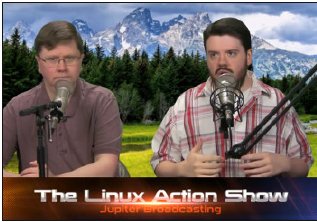| Previous
Page |
PCLinuxOS
Magazine |
PCLinuxOS |
Article List |
Disclaimer |
Next Page |
Welcome From The Chief Editor |
|
Unix was originally created and implemented in 1969 by the Ken Thompson and the late Dennis Ritchie, working for AT&T Bell Labs. They first released Unix in 1970, and it went on to see widespread adoption by academic institutions and businesses. However, even in the 1990s, a commercially available Unix operating system was too expensive for individual users. MINIX was an early Unix-like operating system intended for academic uses. While the source code for MINIX was free, modification and redistribution was restricted. MINIX featured a microkernel, and had a 16-bit design. However, new processors -- namely, the Intel 80386 -- were emerging that embraced a 32-bit architecture.  On August 25, 1991, Linus Torvalds send a message on the comp.os.minix Usenet news group announcing his new operating system. Originally named Freax, Torvalds wanted to create a new operating system that leveraged the capabilities of his new computer, which sported an 80386 processor. One of his co-workers at Helsinki University of Technology, Ari Lemmke, renamed the project Linux without consulting Torvalds, which Torvalds had previously considered, but dismissed as being too egotistical. His message read:
So was born Linux. While it was built on a computer running MINIX, it used no code from MINIX. Instead of a microkernel, Linux featured a monolithic kernel. Linux leveraged the 32-bit architecture of the 386/486 processors. It was originally built with the gcc compiler (GNU C Compiler), which is still the main choice for compiling Linux programs. Initially released under its own license that restricted commercial activity, Linux was quickly moved to the GNU General Public License. The end result was a fully functional, free operating system. Over the years, Linux grew and grew -- and continues to grow to this very day. Development is ongoing at a feverish rate. Its adoption continues to grow. Linux not only powers the vast majority of servers that operate as the backbone of our beloved Internet, but it also powers everyday items, such as mobile phones, tablet computers, set top DVD players, ebook readers, and is even making inroads into the automotive industry. Linux is all around us, whether we realize it or not. It has grown from the original 0.01 kernel of 10,239 lines of code, to the 3.16 kernel, which features nearly 17 million lines of code. Thanks to Linus Torvalds vision, we all benefit today with one of the most -- if not the most -- secure operating system around. Without Linus Torvalds vision, our options would not be nearly as robust, and we'd be forced into using less capable operating systems. Happy 23rd Birthday, Linux! |


